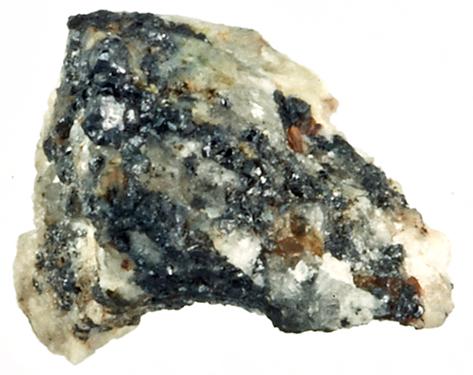Mysterious quasicrystals came to Earth from space, say scientists
Researchers believe a natural quasicrystal, found in a sample of rock from Russia, is part of an ancient meteorite.
Quasicrystals, a type of mineral once thought to be "impossible" in nature, may have fallen to Earth from space, according to a new study published this week in the Proceedings of the National Academy of Sciences.
According to the BBC, quasicrystals break all the rules of what is usually defined as a crystal. Unlike conventional crystals, which are made up of regular, repeating units, quasicrystals contain mathematically regular but unique units that never appear twice.
More from GlobalPost: Quarantid meteor shower, first of 2012, to peak tonight
They first became known to science when Israeli researcher Dan Shechtman created them in his laboratory in the early 1980s, provoking a storm of criticism from other scientists who told him such structures could not exist.
Since then, scientists have replicated Schechtman's findings in labs, but have only ever found one example of a naturally-occurring quasicrystal. It was discovered two years ago in a fragment of rock from Russia's Koryak mountains, in remote Siberia, and left geologists puzzled as to how it had come to be there.
Now, a team of researchers has carried out an analysis of the sample that provides a new theory – that the quasicrystal is part of a meteorite that fell to Earth. New Scientist summarized the findings:
The researchers say the rock has experienced the extreme pressures and temperatures typical of the high-speed collisions that produce meteoroids in the asteroid belt. In addition, the relative abundances of different oxygen isotopes in the rock matched those of other meteorites rather than the isotope levels of rocks from Earth.
Nor did the quasicrystal come from just any meteorite, the researchers say. The pattern of oxygen isotopes are typical of ancient meteorites called carbonaceous chondrites – virtually all of which were formed at the birth of the Solar System, according to Nature. That would make the quasicrystal 4.5 billion years old and one of the oldest minerals on Earth.
The team is still not able to say for sure what process leads to the natural formation of quasicrystals, New Scientist said. However, if they were indeed able to form in space – in far more variable conditions than a laboratory – they may be easier to make than first imagined.
According to theoretical physicist Paul Steinhardt, one of the team that identified the Koryak quasicrystal and a lead researcher on this latest study:
"Nature managed to do it under conditions we would have thought completely nuts."
Steinhardt and his colleagues continue to hunt for other natural quasicrystals, including in the area where the original example was found.
"There is no reason to believe that ours is the only natural quasicrystal, or that all quasicrystals are extraterrestrial," he told Space.com.
More from GlobalPost: NASA loses lunar rocks
Our coverage reaches millions each week, but only a small fraction of listeners contribute to sustain our program. We still need 224 more people to donate $100 or $10/monthly to unlock our $67,000 match. Will you help us get there today?
